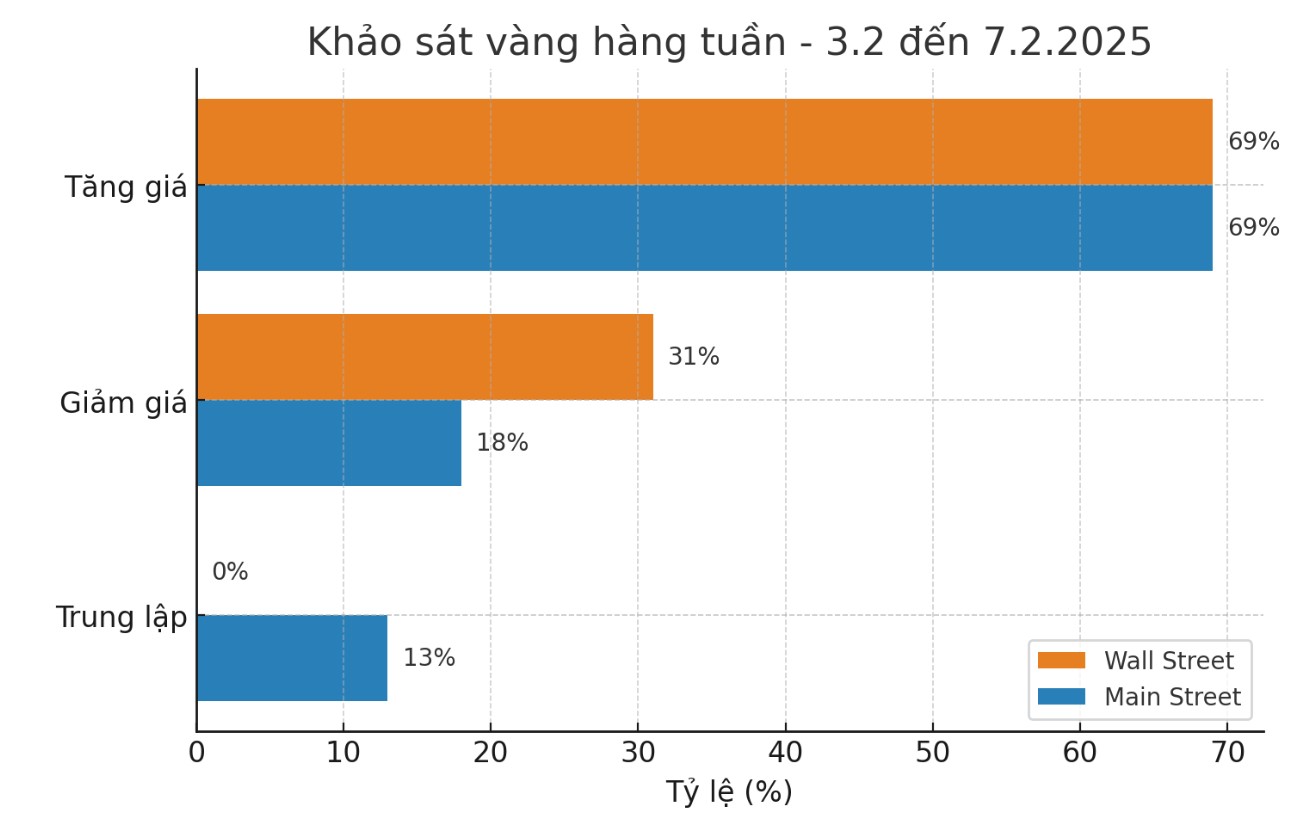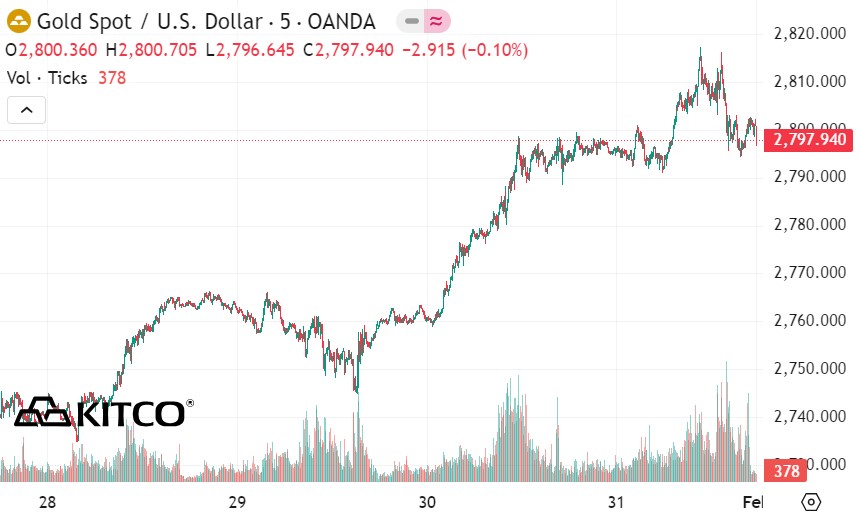Many experts have very positive comments on gold prices in the short term. "I am optimistic about gold next week," said Colin Cieszynski, chief strategist at SIA Wealth Management.
“Gold has just completed a consolidation phase and has broken out to an all-time high. Technically, gold appears to be starting a new rally. What is particularly interesting is that gold is still showing strength even when the USD is strengthening,” the expert said.
“Gold is going to rise,” said Adrian Day, president of Adrian Day Asset Management. “Gold has been particularly strong in recent weeks due to concerns about US tariffs. While the actual tariffs may not be as severe as initially feared, the concerns that have driven gold over the past two years have not gone away.”
Meanwhile, Rich Checkan, president and COO of Asset Strategies International, commented: "My instinct is to see prices lower due to profit taking... but I still see prices rising. Whether it is exaggerated or not, the news of the shortage of gold in London, combined with the tariffs of US President Donald Trump and the inflationary pressures mentioned by the Federal Open Market Committee (FOMC) last Wednesday, all contribute to pushing gold prices higher."

“Up,” predicted Darin Newsom, senior market analyst at Barchart.com. “The volatility created by the new U.S. administration is not going away anytime soon. In fact, it’s only going to get worse.
It will take a long time for the markets and the media to become numb and stop paying attention to the noise. Until then, continue to expect gold (along with silver and other precious metals) to attract safe-haven flows, even as the market sets new record highs,” said Darin Newsom.
Daniel Pavilonis, senior commodities broker at RJO Futures, analyzed the short-term factors that caused gold prices to surge this week.
“I think the main reason is the sharp decline in bond yields and the US dollar, although the US dollar seems to be inching up a bit but is still far from its peak,” he said.
“In addition, the possibility of tariffs that could increase inflation, the tariff war with Canada, Mexico, and possibly China. So the market is seeing money looking to gold as a safe haven. The market is really bullish, any little reason can drive demand for gold, towards the ultimate target of $3,000 an ounce. That level seems to be very close. I think psychologically it is like a magnet, and any news right now can help gold get closer to that.”

However, Pavilonis does not think that the US Federal Reserve's (FED) decision to keep interest rates unchanged this week will have too much of an impact on gold prices.
“I think the gold market is expecting inflation to persist for longer. They’re watching the 10-year inflation versus the 10-year yield to see if that spread is going to narrow. But the impact of higher tariffs, trade wars, currency issues from tariffs, and a host of other factors… all of that is driving money into gold as a haven. I also think central banks are buying gold alongside retail investors, and the volatility seems to be quite reasonable,” Pavilonis added.
Pavilonis believes that even if the tariff issues are resolved, the key factors that have pushed gold to record highs in recent years will continue to be in place. “I think gold will hit $3,000 an ounce by the end of this quarter,” he predicts. “However, depending on how the tariffs play out, we could also see some profit-taking that would take gold down to around $2,750 an ounce, or to the 50-day or 100-day moving average, before it recovers.”
“The factors that are driving gold prices are not going to change unless things get too tense and the exchanges are forced to raise margin levels to unusually high levels, which could trigger a sell-off. But I still think gold will have a lot of volatility because even if tariffs are renegotiated, that will take time. There are a lot of disruptive factors that will continue to impact the market, and it won’t happen overnight,” Pavilonis said.











